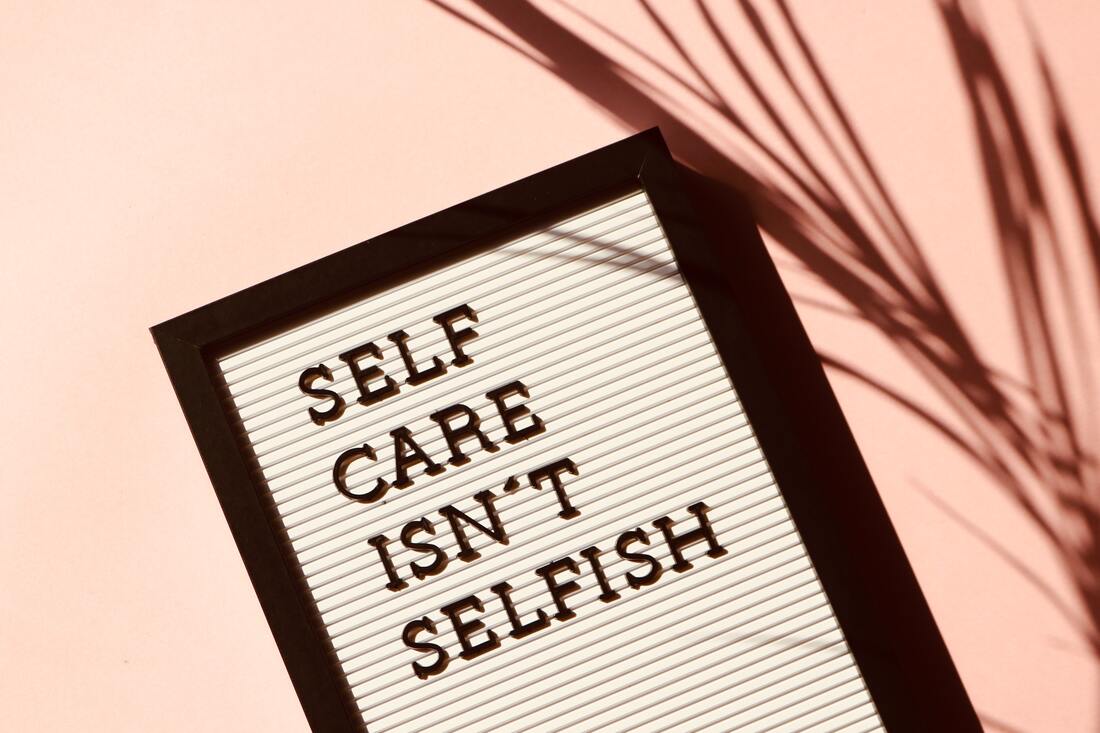|
Have you set unattainable, high standards for yourself? Do you become self-critical when you do not achieve said high standards? Have you become critical of others for not meeting the standards which you have set? Does your fear of failure lead you to procrastination or hinder you from following your dreams? If you have answered yes to any of the above, you may have perfectionistic tendencies.
While continuously striving to be the best version of yourself and having attention to detail can be a great driving force, perfectionism often becomes a roadblock. How do you know if perfectionism is blocking your path to self-actualization?
0 Comments
Constant Interruptions, Disturbances, Noise - How They Can Rob You of Your Focus (and Motivation)21/9/2023 They are building all around me this week – even with a jackhammer just below me. It is unbearably noisy. This noise is robbing me of my focus and, consequently, my motivation.
Currently, I am writing this while sitting in a quiet restaurant near my apartment and right by the lake . Hotel lobbies seem to stimulate creative thoughts. Nothing against the builders or the need to repair / renovate something in the building. That is life. We need to do maintenance on buildings just as we need constant maintenance in the form of self-care. But the level of disruption has made me appreciate how much noise makes it difficult for me to focus and concentrate. I had intended to do my morning brain training before I started work today but found that the drills and the jackhammer were too disrupting. So disrupting, in fact, that I left the house and retreated to this lakeside location. No matter how much I encouraged myself to, I just could not handle it. Parenting is a rewarding yet challenging journey that requires a multitude of skills and strategies to navigate successfully. As parents strive to create a nurturing and supportive environment for their children, they often find themselves seeking guidance and tools to become more effective in their roles.
One unexpected source of valuable skills is life coaching. Life coaching, which focuses on personal growth, goal setting, and self-improvement, can offer parents a unique set of tools to enhance their parenting abilities. In this blog, we will explore how life coaching skills can help individuals become better parents, fostering healthier relationships and nurturing positive development in their children. Have you ever felt so stressed and exhausted at work that you just couldn't do it anymore? If so, you're not alone. Burnout is a growing problem in today's workplace, and it can have a serious impact on our physical and mental health.
What is Burnout?According to the World Health Organization (WHO), burnout is a syndrome resulting from chronic workplace stress that has not been effectively managed. It manifests in three dimensions: feelings of energy depletion, feelings of negativism, and reduced professional efficacy. How Widespread is Burnout?Understanding the prevalence of burnout is crucial in acknowledging its seriousness. According to the recent Microsoft's Work Trend Index, 53% of managers report feeling burned out at work. This staggering statistic highlights the widespread impact of burnout, especially among managerial positions. Feel like constant meetings are hanging you up? Set a regular meeting with yourself.
Meetings and more meetings. Just as you finish one call, you are dialing into the next one. Need to go for toilet break? Forget it -- there’s another meeting. This meeting situation was already insane before the pandemic, and it it has only gotten worse now with so many people working from home. There are dozens of articles about how to spend less time in meetings, how to reject meetings without looking bad, about 2/3 of our life being spent in meetings. All these articles trying to help us save ourselves. Yet many of us keep falling into the meeting trap. I have yet to find the magic formula for myself, however I do believe I am becoming more aware about how I am actually spending my time versus how I want to spend my time. Expectations limit success.
When you expect a certain outcome, the best that can happen is that you get what you hoped for. But that outcome might be tiny matched to what is actually possible. Expectations create suffering. Put another way, we create our own suffering when we cling to expectations. Rupert Spira, in his book You Are the Happiness You Seek, said the following: The only reason we are not at peace and filled with joy now is that circumstances do not conform to our idea of how they should be In the Oxford Dictionary, the definition of a “control freak” is “a person who feels an obsessive need to exercise control over themselves and others and to take command of any situation.” The Merriam Webster dictionary says that a control freak is “a person whose behaviour indicates a powerful need to control people or circumstances in everyday matters.”
This personality trait could stem from a chaotic childhood, alcoholic parents, abusive behaviour, or early abandonment. Such experiences can make it hard for people to trust or relinquish control to others. The fear of falling apart pushes them to control what they can. As their emotions are all over the place, they feel loss of control. For this reason control freaks will micromanage whatever they can with the belief that this makes them strong. People who feel out of control tend to become controllers. I imagine each and every one of us is a control freak, or takes on the behaviour of such, at some point or another. The fear of failure is what makes it so important to control everything when you do not trust anybody else to do a good job. One difficult aspect of being around a control freak is accepting that they do not understand how their behaviour and choice of words affect the people around them. Another difficult aspect is not to take it personally. This behaviour comes from deep inside and the person is actually quite unaware of being a control freak. Even the most enlightened of us can’t always stop ourselves from worrying about the future and asking ourselves “what if?” Underneath our connection to our Higher Self that we work so hard for, lurks the fear of future problems just waiting for an opening to ask us “what if?”
You know how it is…trouble is brewing at your job, layoffs could be coming. What if you lost your job? There have been a rash of pedestrian traffic accidents lately. What if your child is hit by a car? Your mother’s routine check-up turns into several follow-up appointments. What if she is sick? And on and on. Before we know it, our Chatterboxes have taken over. We are filled with fears about the future and the “what if” questions drag us down to our Lower Self. Many of us “what if” ourselves into a perpetual state of worry. “What if” questions come from our Lower Self, our inner chatterbox that wants us to live in perpetual fear. Susan wrote in Feel the Fear and Do It Anyway, “When the ‘what ifs’ are out in full force, the internal Chatterbox is at it again. You look at the unknown and try to predict the future; you try to take control of outside forces. Both are impossible. At this point you might notice you are driving yourself crazy.” Fear of failure often stands in your way in the journey of personal and professional growth.
As a society, we view failure negatively as something that diminishes our worth or derails our progress. What if you could shift perspectives? I’m saying, view failure as an opportunity to be more faithful to yourself. When embraced with the right mindset, failure can become a catalyst for transformative change, leading you closer to the authentic leader you're meant to be. Failure Teaches You a Lesson Every failure carries a valuable lesson. Whether it's an exam, a presentation, a project that didn't meet expectations, or a strategic decision that led to unexpected outcomes, each failure serves as a teacher. You may know the feeling. You applied for an exciting job opportunity, expressed interest in a potential romantic match or applied to occupy the home of your dreams and then you receive the unfavorable response. You have not been selected.
That immediate feeling of hurt, rejection and simply not being “good enough” sets in. And this is the exact moment where you need to stop yourself from going down the road of negative reflection, the further you go down that path the longer you have to get back on track. Instead, choose to be redirected and here is how. Once upon a time, there was a man named Jack who struggled with communicating effectively with his wife, Jane. He would often get defensive and shut down during arguments, causing tension and frustration in their relationship.
One day, Jack decided he needed to make a change. He had heard about a technique called Neuro-Linguistic Programming (NLP), which could help him improve his communication skills and build stronger relationships. With the help of an NLP coach, Jack learned a variety of tools and techniques to improve his communication with Jane. Here are a few of the most effective techniques he learned: How about going out for a sail, swim, drink, run, or meet friends, play with your children,
talk to your partner – without your head still being full of work-related information? It can be difficult to leave work related thoughts behind at the end of the day. Too many people arrive home not really present. Their bodies might have walked through the door but mentally they are miles away. This seems to be the reality in today's world. Remember: There is more to life than just work. You do need some kind of balance between down-time and work to be the most effective. Clarity will come easier if you give your brain a rest. It is amazing what thoughts, ideas, solutions and insights can come to you by creating some space for them. This is a common topic with my coaching clients. I might work with five different clients on this particular topic, yet each one will find his or her unique way to unwind and reenter personal life. It helps to remember and accept as an important truth, that your work is only part of your life. It is wonderful if you love what you do and have passion for your work, but do not forget that your personal life is at least as important as your work. The goal is not to neglect your work but also not neglect your family, friends, and self. Establish and maintain a routine of self-care. Start by unwinding from work on your way home. Some examples that have helped my clients include: listening to music or an audiobook in the car or on the train, taking a walk and being more mindful while doing so, meeting a friend, or exercising. Start instilling this habit and you will experience life as more satisfying, rewarding, happy, and healthier in mind and body. Limiting beliefs are negative thoughts and assumptions that hold us back from achieving our goals and reaching our full potential. They can be deeply ingrained and often go unnoticed, but they can have a significant impact on our lives if left unchecked. In this article, we'll explore some effective ways to manage limiting beliefs and overcome your inner critic.
Identify Your Limiting Beliefs The first step in managing limiting beliefs is to identify them. Start by paying attention to your inner dialogue and noticing any negative thoughts that come up. These thoughts might include things like "I'm not good enough" or "I'll never be able to do that." Once you've identified your limiting beliefs, write them down and examine them more closely. Ask yourself whether these beliefs are based on facts or whether they are simply assumptions. There is nothing like being comfy and cozy in our comfort zones. Right? The problem with that is, of course, that we can’t change or grow if we hold on to our comfort zones. As Susan wrote in Feel the Fear and Do It Anyway, “Most of us operate within a zone that feels right, and outside of it we are uncomfortable. For each one of us that zone of comfort is different, but whether we are aware of it or not, all of us—rich or poor, famous or unknown, gay or straight, male or female or whatever our gender identity— make decisions based on the confines of that comfortable space.”
While we may feel secure in our comfort zone, we likely are living with the pain of neediness and the fear of change. While comfort zones can make us feel secure, they also keep us from feeling powerful. If we want to grow, to experience, to learn, we have to start moving out of complacency in that comfortable space. We have to start expanding our boundaries. To do so, we have to take action, we have to put in the work—even if it means being uncomfortable. That is the only way we can know our own power. With leaders advocating for individual progress and team success, coaching is essential to career satisfaction, retention and employee wellbeing and plays a critical role in achieving fulfilment.
Coaching is more than just talking It's a collaborative, thought-provoking process involving the coach and the client working together to identify core values, individual strengths, and areas for growth to overcome obstacles that stand in the way of fulfilment. In the corporate world, this Alliance can have a transformative impact, helping leaders and employees navigate complex challenges, improve communication, and enhance overall performance through, for example, understanding someone else's perspective. Providing leaders and employees with the support and guidance they need to feel fulfilled is essential for any successful business. 1. Coaching helps individuals identify their core values and align their work with those values, promoting fulfilment and improving overall performance. When employees are clear on their values and align them with their work, they are likelier to feel a sense of purpose and fulfilment every day. Coaching helps identify those core values and explores how to integrate them into work. This process is what leads to a more meaningful and fulfilling work experience. I have witnessed all too often with friends, family, clients, and in my own life, how easy it is to go in circles or bang your head against the same wall when you try to get something done. It feels like you are blocked. You keep ending up in the same place, repeating the same patterns.
A coaching client of mine never quite achieved the goals he set for himself. Despite taking proactive steps, he still ended up going around in circles. On one level, he believed in the success of his project. Yet deep down inside, a little voice kept repeating, “What is the point? You will not succeed anyway." In his case, the little voice was his impatience, which kept him going around in the same circle. Instead of taking a little extra time to deal with issues that appeared, he would push forward, overlooking them until they had accumulated to a point where they blocked the success of the project. We reframed his limiting belief, “Things have to happen quickly in order to be successful,” to a healthier one: "Taking more time and care allows the project to come together more easily." The result was he had more patience, which lead to a successful outcome of his project. “Challenges in life either do or do not have solutions. If there is a solution somewhere, then there is no need to be overwhelmed by the challenge. If there genuinely is no solution, then there is no point being overwhelmed by it." Unknown If you genuinely believe there is a solution to every problem, there is a greater likelihood that you will find the solution. Personally, I believe the approach “where there is a will, there is a way.” I do not always find the way as soon as I would hope – which is sometimes due to a lack of motivation. I then remind myself that I know that nothing stays the same, and therefore I have nothing to fear. Things will change even if I do nothing.
The first and most important step is to realize and truly acknowledge that unless you take care of yourself nobody else can or will. When I say, “truly acknowledge”, I mean that you have accepted the following:
These are a few examples, expressed in simple terms: You have taken charge of your life, know your Values and maintain your Personal Power. You can live your life … it does not have to be living you! To reach your potential as well as feel content in the course of your life, having Life Skills is essential. They are the “software” you have the option to acquire along the way. You are born with the “hardware”: your body. Your behaviour comes under the heading “software” because this can be changed, improved, modified, extended or even deleted if necessary. Many of these Life Skills are received in the home and at school while growing up, others you learn later in your development, taught by “the school of life”, friends, colleagues, courses, books, teachers, trainers, and coaches. You can also teach yourself with patience and practice based on all of the above, plus past experiences, both positive and negative ones. What makes one person successful while others keep struggling? Everybody goes through difficult phases, has obstacles to overcome and disappointments to heal. This cannot be avoided. How you cope with all of these is the key to making your life a success. Life Skills offer support with how you handle your life. They can be defined as a group of cognitive and personal abilities that enhance your capability to lead a life in which you reach your potential. Every person has strengths and weaknesses; getting to know them is important in the process of finding out “who” you are and therefore “what” you want. Not everybody has the same dream. You should not judge others but find your way forward based on your own values. The success of some people is not a matter of luck; they will have learned how to manage their life, and they will have acquired the life skills - the “software”. Understanding that life is about change, which is inevitable, is one of the first steps on this ladder to the top! Your personal worth will benefit knowing you have the necessary skills in life to face everything that comes your way with confidence. by Suzie Doscher, Executive Coach focusing on Self-Development, Self-help Author since 2014. Photocredit: Cottonbro / Pexels Excerpt from the 1st Edition of BALANCE - a Practical Handbook for Life's Difficult Moments. Contact one of our coaches for a free introductory session.If you recognize the warning signs of impending burnout in yourself; remember that it will only get worse if you leave it alone. But if you take steps to get your life back into balance, you can prevent burnout from becoming a full-blown breakdown.
Read on for some tips: Worried About Achieving Your Goals? Take Charge of the Stress in the Moment to Stay on Track5/1/2023 You have a goal, but are worried you will not achieve it. So many issues are popping up that need dealing with, obstacles and other unexpected ‘stuff’ keeps interfering with your daily plan and / or overall daily structure. Stress kicks in, which means focusing is harder and so less is achieved… sound familiar?
All of these thoughts and mind chatter do not have to result in your getting off track or losing sight of your goal. The trick is to take charge of your thinking and push the ‘reset’ button. By this I mean, ‘reset’ the moment, not the direction you are heading or the goal you intend to achieve. Resetting the moment means handling whatever is causing you stress. Stress is an emotional issue and will not vanish with the flick of a switch in your brain. Unless, of course, you already.... I am a big believer that moving forward means improving the existing quality of your life. Of course reaching goals and increasing your performance it important. How you feel while you are doing this is what I believe makes up for quality of life.
You can be reaching goals and increasing your performance by pushing through, being competitive while running on an empty battery. At some point your body and emotional self will not be able to keep up. To increase your quality of life I suggest doing things differently or adding something entirely new to your routine. Maybe this is changing your location or job, or even friends, these are big changes. How about starting with getting rid of some behaviour patterns that no longer serve you? Replace them with behaviour patterns that do serve you. I love personal growth & development. My personal as well as professional experience can vouch for that each step taken, even small steps, results in change. Imagine climbing up a ladder. With each step your view changes and brings a new perspective. Make the kind of changes that stick! Life changes all the time, sometimes daily. During your lifetime you never stop growing, developing and learning, which of course means changing. If you resist this, you run the risk of staying stuck. Here is how you start: Why is responding ignored? Is it not a sign of respect, a sign of kindness just to respond with 1 word even? Is it time consuming?
I know that we receive nowadays many invitations, many marketing materials, people reaching out to people to either connect or find synergies. An over flux of information that a busy professional cant always follow or has the desire even to spend energy on a response. Or spend time on it as we are overloaded and feeling exhausted. If you put yourself in the shoes of the person who asked and you don’t get a response, how would you feel? Offended, not taken seriously, not being recognized? As business owners, we reach out to people, and I do the same. On the other hand, I receive lots of requests as well, offers and marketing requests via email, over Instagram, Facebook and Linkedin. Staying calm and grounded requires certain behaviors that feed being calm and grounded. Each person will have his/her own requirements to feel calm and grounded. The actions you need to take are unique to you and will most likely differ from those others need to take. Just as each person has his/her own interpretation of success, each person has an individual feeling calmness and being grounded. Listen to yourself to know what is best for you. Based on my own personal experience, this also changes depending on age: When I was 30, my focus was very different to 40.
You will know what is right for you. Follow your heart and remember that you cannot take anything with you. No matter what you achieve and how much you earn, how you feel along the way is just as important. By Suzie Doscher, Executive Coach focusing on Personal Development, Self-help author since 2014. Photo credit: Pexels Whatever your age and goals, if you would like support, contact Suzie or one of our other coaches for a free introductory session.Often plans, goals and wishes can be overwhelming. Overwhelming in that they might be fabulous thoughts and ideas however in reality you are not there yet and not even sure how to get there! Feeling overwhelmed due to lack of time, outside pressures, demands, lack of clarity and a lack of energy can easily happen. A good approach is to first consider what the reality is in the moment, now/today and only then explore the 'what ifs' - potential outcomes and consequences of the plan or goal. Taking the time to connect with the present i.e. ‘what is’ will allow you to ground yourself. With this you can approach the feeling of overwhelm with both feet on the ground. Removing the emotions and overwhelm, allows you to think more clearly. This has been proven by neuroscience. When emotions have been triggered, the first thing to go is your cognitive ability. This means you are emotional and not thinking clearly – emotional not rational. To explore all the consequences of ‘what if’ is easier with a clear rational mind. Exploring all the possible ‘what ifs’ is necessary to break the goal, wish or desire down into small actionable steps. Furthermore, if a change of your mindset/perspective is necessary, this shift could might occur during the process of the 'what is' exploration. One way or another, you will gain some clarity by taking the time to do this. Sometimes this is easier said than done. The best approach is to simply start! Plan some time. Even ten minutes will do. If you do not start, you will remain overwhelmed. Once you have taken one step--even a small one--you will feel a difference. One small step at a time will get you to the top of the ladder. by Suzie Doscher, Executive Coach focusing on Personal Development, Self help Author since 2014 Photo credit: Unsplash For suggestions on HOW to break your plan into smaller steps listen to the audiobook version Suzie Doscher's
|

























 RSS Feed
RSS Feed